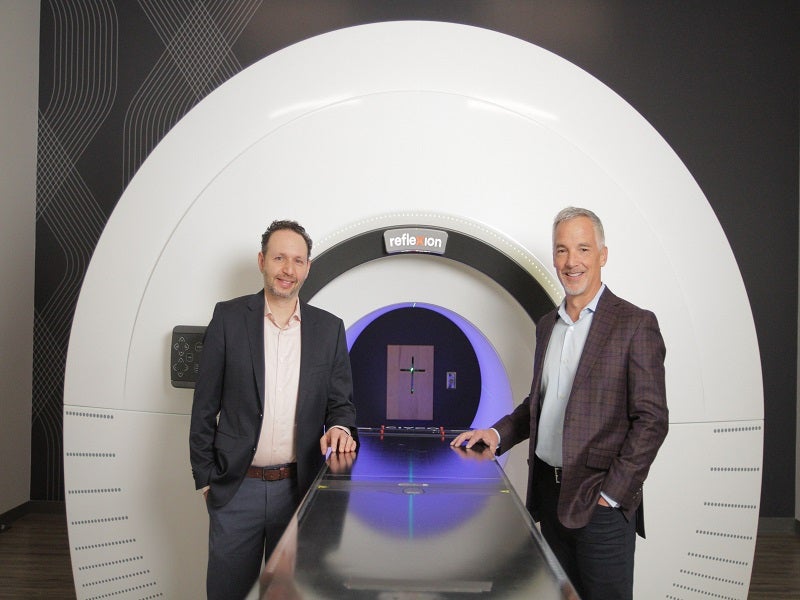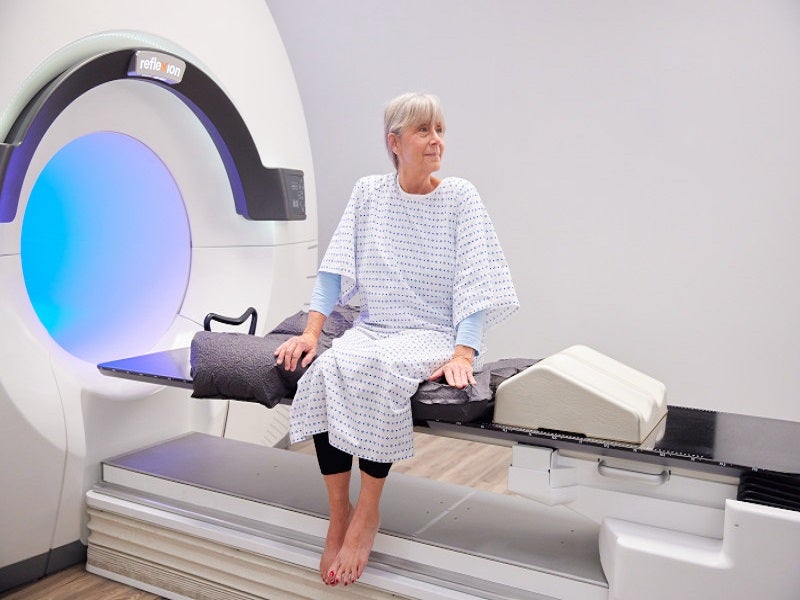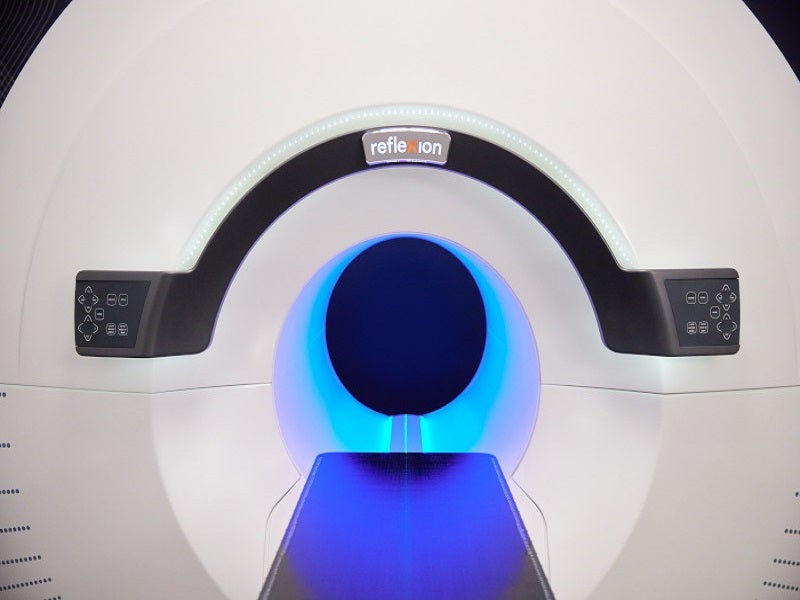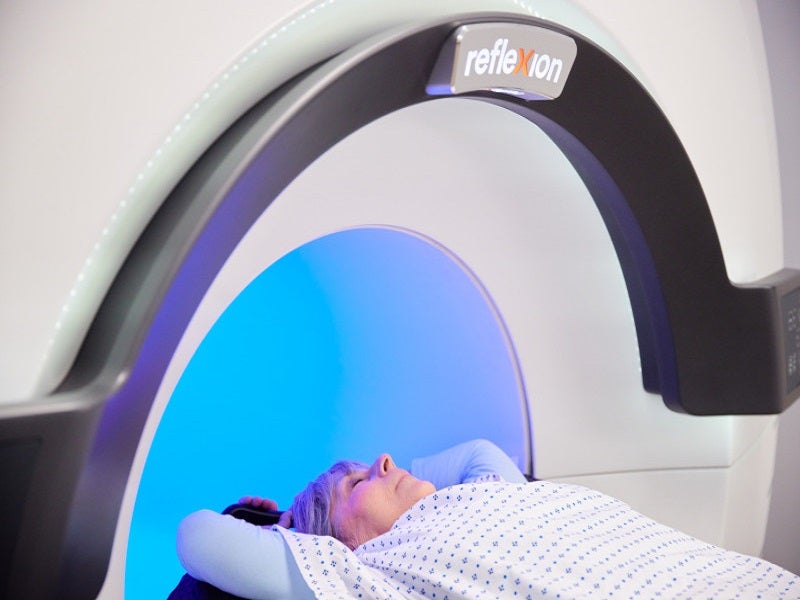Scintix™ is a first-of-its-kind, autonomous biology-guided radiotherapy (BgRT) developed by RefleXion Medical, a therapeutic oncology company based in the US. It is indicated for the treatment of lung and bone cancers. Scintix radiotherapy can be used for both early and late-stage cancers.
In February 2023, Scintix BgRT received its first marketing clearance for clinical use from the US Food and Drug Administration (FDA) when used on RefleXion’s® X1 machine. The FDA previously granted breakthrough device designation to the device for treating lung cancers.
Details of RefleXion’s Scintix biology-guided radiotherapy
Scintix biology-guided radiotherapy uses cancer’s own biological characteristics to guide the delivery of radiotherapy, even in moving tumours.
The Scintix therapy delivered through the RefleXion X1 machine makes it the first platform to combine positron-emission tomography (PET) technology, which is viewed as the highest standard of cancer staging and imaging, with a linear accelerator (LINAC) for controlled radiation dose administration without affecting healthy tissues for the potential treatment of several tumours during daily treatment.
The X1 machine is the only dual-treatment modality platform to treat patients with lung or bone tumours at any stage. It also has a state-of-the-art anatomic modality that has been FDA-approved for solid tumours located anywhere in the body.
PET has long been used to identify cancer in the body, often by monitoring emissions from malignant cells following a radiopharmaceutical injection. The emissions reflect from the tumour’s biological activity and appear as hot spots on a PET scan, followed by the delivery of radiation therapy using a LINAC.
Scintix therapy’s method of action
Scintix utilises anatomic data from computed tomography (CT) and functional imaging data from PET to deliver personalised radiotherapy for cancer treatment.
The patient is injected with fludeoxyglucose F18 (FDGs) before lying down for treatment. FDG is a radiotracer that combines a diagnostic radioisotope such as fluorine-18 with glucose, which cancer cells use at a higher rate than a healthy tissue does.
When the cancer cells consume the FDG, emissions are produced from the tumour. The RefleXion X1 machine equipped with Scintix technology detects these emissions and continuously constructs a map based on data from the patient’s cancer cells to determine the position and amount of radiation to be delivered in treatment.
Scintix technology detects emissions from the injected radiotracer and returns beamlets of radiation to tumours in just half a second to destroy them, turning cancer’s biological characteristics back on itself.
Benefits of RefleXion’s Scintix biology-guided radiotherapy
Scintix tracks the delivery of radiation dosage to cancer cells in real-time during radiotherapy, thus minimising the need for providing large doses of radiation to the patient’s entire internal target volume. It protects the surrounding healthy tissue from any harm, reducing the risk of toxicity for the patient.
By reducing the volume of tissue treated with radiation, Scintix therapy seeks to cure oligometastatic and polymetastatic diseases in a single session.
The Scintix radiotherapy treatment resolves the issue of targeting and motion management, which have long been challenges to radiation for metastatic diseases. The Scintix biologic modality tracks tumour motion from any type of movement, including internal involuntary motions such as breathing and digestion, or unexpected movement of the patient.
RefleXion can work together with chemotherapy, immunotherapy, and targeted drugs to potentially improve patient outcomes. The RefleXion X1 is the only dual-modality platform capable of treating patients with specified solid malignancies at any stage.
The RefleXion X1 with Scintix treatment is a unique hybrid platform that provides both biologic technology for tumours in motion and anatomic capabilities through its onboard fan-beam, kVCT.










